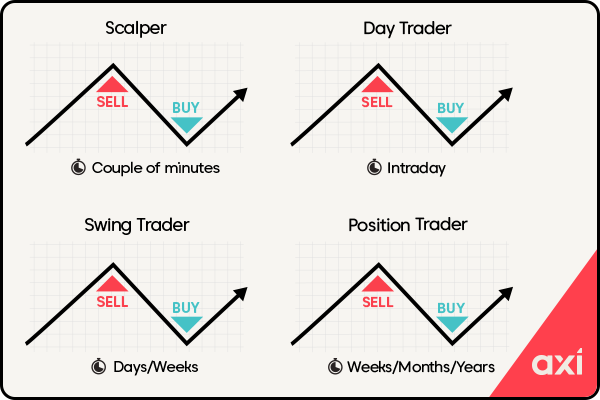TRADING BASICS FOR BEGINNERS

Introduction
For beginners who are interested in trading, it is important to understand the basic concepts before diving into the world of financial markets. This article aims to provide an overview of the fundamental principles of trading, covering key terms and concepts that every novice trader should be familiar with.
Understanding the Market
Before starting your trading journey, it is crucial to understand the market you will be participating in. The financial market is a vast ecosystem where various financial instruments are bought and sold. These instruments include stocks, commodities, currencies, and derivatives.
One of the fundamental concepts in trading is supply and demand. Prices of financial instruments are determined by the balance between buyers and sellers in the market. When there is more demand for an instrument, its price tends to increase. On the other hand, if there is more supply than demand, the price tends to decrease.
Types of Trading
There are different types of trading strategies that traders employ, depending on their goals, risk tolerance, and time commitment. Here are a few common types:
1. Day Trading: Day traders open and close positions within the same trading day, aiming to profit from short-term price fluctuations.
2. Swing Trading: Swing traders hold positions for a few days to weeks, taking advantage of medium-term price movements.
3. Position Trading: Position traders hold positions for a longer duration, often months or years, focusing on long-term trends.
Technical and Fundamental Analysis
When it comes to analyzing the market, traders use two main approaches: technical analysis and fundamental analysis.
Technical analysis involves studying historical price and volume data to identify patterns and trends. Traders use various tools, such as charts and indicators, to make informed trading decisions.
Fundamental analysis, on the other hand, involves evaluating the financial health and performance of a company or an economy. Traders analyze factors like earnings, revenue, and macroeconomic indicators to assess the value of an instrument.
Risk Management
Risk management is a crucial aspect of trading that beginners must understand. It involves implementing strategies to minimize potential losses and protect capital. Some risk management techniques include setting stop-loss orders, diversifying the portfolio, and using proper position sizing.
Risk Management
Risk is inherent in trading, and effective risk management is crucial.
1. Leverage:
- Using borrowed capital to amplify potential returns.
- However, it also magnifies potential losses, emphasizing the need for caution.
2. Stop-Loss Orders:
- Setting predetermined points to exit a trade to limit losses.
- Essential for disciplined risk management.
Developing a Trading Plan
A well-structured trading plan is a roadmap to success.
1. Define Goals:
- Clearly articulate short-term and long-term trading objectives.
2. Choose a Trading Style:
- Day trading, swing trading, or long-term investing – select a style that aligns with your lifestyle and risk tolerance.
3. Risk-Reward Ratio:
- Assess potential gains against potential losses for each trade.
- Aim for a favorable risk-reward ratio.
Market Analysis
Trading decisions are often based on comprehensive market analysis.
1. Fundamental Analysis:
- Examining economic indicators, company financials, and global events.
- Useful for long-term investors.
2. Technical Analysis:
- Analyzing price charts and patterns.
- Valuable for short to medium-term traders.
Practical Tips for Beginners
1. Start Small:
- Begin with a modest investment and gradually increase exposure as you gain experience.
2. Continuous Learning:
- Stay updated on market trends, economic news, and trading strategies.
3. Demo Trading:
- Practice with a demo account to understand platform features and test strategies risk-free.
4. Emotional Discipline:
- Keep emotions in check during both winning and losing streaks.
- Emotional discipline is key to successful trading.
5. Diversification:
- Spread investments across different assets to mitigate risk.
6. Choose the Right Broker:
- Select a reputable broker with user-friendly platforms and competitive fees.
Conclusion
As a beginner in trading, it is essential to grasp the basic concepts before diving into the market. Understanding the market, different trading strategies, and risk management techniques will lay a strong foundation for your trading journey. Remember, trading is a continuous learning process, and it is important to stay updated with the latest trends and developments in the financial markets.Trading, while potentially lucrative, demands a solid grasp of its fundamentals. By understanding market types, implementing risk management strategies, and developing a thoughtful trading plan, beginners can embark on their trading journey with confidence. Continuous learning and disciplined execution are the cornerstones of success in the dynamic world of trading.
- Pingback: BEST TECHNIQUES IN TRADING - strategictraderpro.com
Leave a Reply